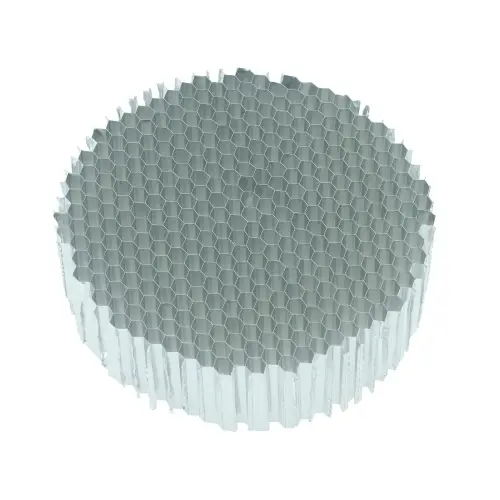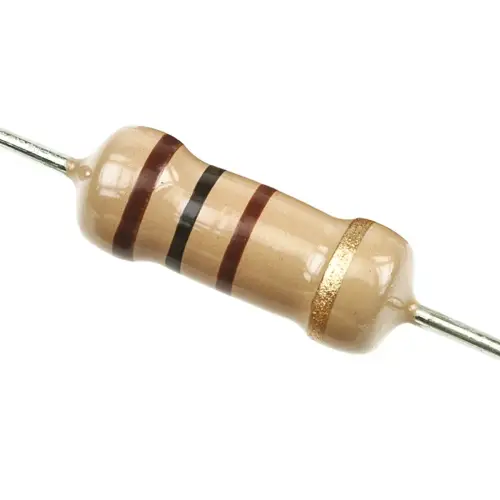The mass air flow (MAF) sensor measures the volume of air entering your engine and relays this data to the engine control unit (ECU). The ECU uses MAF readings to properly balance the air-fuel ratio for optimal combustion. When functioning correctly, the MAF is critical for engine efficiency and performance.
Some drivers attempt to modify or trick the MAF sensor to skew the airflow readings. The goal is to trick the ECU into delivering more fuel to increase horsepower. While this may work temporarily, we strongly advise against tampering with the MAF sensor. Not only are these tricks unpredictable, but they can seriously jeopardize engine operation.
You can read more about why a car would run better with the MAF sensor unplugged here.
- 01. Replace the MAF Filter Screen
- 02. Install a Cold Air Intake
- 03. Use Magnets to Accelerate an Automobile
- 04. Enlarge the MAF Sensor Housing
- 05. Use a Resistor to Alter Readings
- 06. Physically Alter the MAF Sensor
- 07. Use Objects to Obstruct Airflow
- Consider Professional ECU Tuning Instead
- Why Attempt to Trick the MAF Sensor?
- Consequences of Mass Air Flow Sensor Tricks
- FAQ
In this article, we’ll outline some common MAF sensor modification methods. However, we detail these tricks solely to spread awareness of their risks. We recommend consulting a professional mechanic rather than attempting these alterations yourself.
01. Replace the MAF Filter Screen

One simple MAF hack is to replace the stock filter screen with a larger mesh version. The filter screens on some hot-wire style MAF sensors straighten incoming airflow for measurement. Larger holes in the mesh reduce turbulence, resulting in lower airflow readings.
While installing a screen with larger holes may initially lower readings, this deception causes incorrect fuel delivery. The engine will likely run too lean, risking detonation, power loss, and catastrophic engine damage over time.
02. Install a Cold Air Intake
Many opt for an aftermarket cold air intake system expecting it will automatically enhance performance. But without proper ECU tuning, the cooler intake air skews the MAF readings. The ECU compensates by reducing fuel delivery, negating any power gains.
Proper ECU calibration is required when installing intake and exhaust mods. Otherwise, the engine may run too lean. We advise leaving air intake modifications to experienced mechanics.
03. Use Magnets to Accelerate an Automobile
This myth involves placing powerful magnets around the MAF sensor or air intake system. The belief is that the magnetic fields will ionize incoming air, creating less drag for easier airflow. It’s an intriguing theory, but completely ineffective in practice.
Save your money – magnets have no ability to enhance airflow or engine power. Proper equipment like intake and exhaust improvements combined with professional ECU tuning is the only way to gain substantial horsepower.
Related content: Best Mass Air Flow Sensor Cleaner Alternatives
04. Enlarge the MAF Sensor Housing
To allow more airflow past the MAF, some enlarge the sensor’s inlet and outlet openings. However, this deceives the ECU by allowing more air than the MAF can measure. Similar to other tricks, the engine will run too lean and likely overheat or become damaged.
Properly sized housings ensure the MAF can accurately measure all incoming air. Attempting to create extra airflow by altering housings is not worthwhile.
05. Use a Resistor to Alter Readings

A common tactic is adding a resistor to the MAF sensor’s signal wire. This lowers the air flow reading voltage going to the ECU. The ECU then compensates by increasing fuel, thinking the sensor is reading less air.
While a resistor may briefly increase fuel for a power gain, it also leaves the engine running rich. Expect reduced fuel economy, fouled spark plugs, and inevitable engine issues when tricking the ECU with false sensor data.
06. Physically Alter the MAF Sensor
Technically inclined tinkerers may attempt modifying the internal thermistors, computer chips, wiring, or other components inside the MAF. However, this requires extensive electronics expertise and risks permanently damaging an expensive sensor.
At best, these alterations create temporary power gains before leading to drivability issues and faults. We recommend against attempting to physically modify the internals of a MAF sensor.
07. Use Objects to Obstruct Airflow
Placing small objects like nuts, bolts, or sticks inside the MAF inlet is another way drivers try restricting airflow. Lower readings prompt the ECU to add more fuel. But just as with other tricks, the engine ultimately runs improperly rich.
Intentionally introducing debris into the air intake system is extremely risky. Objects could break loose and critically damage internal engine components.
Consider Professional ECU Tuning Instead

Rather than MAF sensor tricks, we highly suggest professional ECU tuning to maximize power while preserving engine safety. With an ECU tune, air/fuel mapping is expertly calibrated for any intake, exhaust, or forced induction mods.
Reputable performance shops can optimize the ignition timing, shift points, rev limiters, and other parameters to tune the ECU safely. This extract substantial power gains without endangering the engine.
While ECU tuning has an upfront cost, it prevents exponentially higher repair bills down the road. Improper MAF tricks could cost thousands in damaged components. Investing in a proper tune protects your investment and peace of mind.
Why Attempt to Trick the MAF Sensor?
While we’ve explained why tampering with your mass air flow sensor is ill-advised, you may be wondering – why do people attempt it in the first place?

In most cases, the intent is to increase engine power and performance. Here are some specific reasons drivers try to trick their MAF:
- Perceived lack of power – Owners of older, high mileage vehicles may feel their engine lacks power and acceleration. Tricking the MAF is an easy DIY attempt to inject more fuel for a power boost.
- Compensating for modifications – Adding performance modifications like cold air intakes, free-flow exhausts, or turbochargers increases airflow demands. Without proper ECU tuning, some compensate by tricking the MAF to add more fuel.
- Pass inspection – Vehicles with check engine lights or failed emission tests due to a faulty MAF may try bypassing the sensor temporarily to pass inspection. However, this only masks the underlying problem.
- Improve fuel economy – Some mistakenly think fooling the MAF will optimize air-fuel ratios for better fuel efficiency. In reality, it does the opposite by running the engine too rich.
- Beat the system – There’s an appeal of trickery for some to sneak extra horsepower against the manufacturer’s design. But this tampering often backfires.
While these goals are understandable, tricking the MAF sensor is simply an ineffective and dangerous means of achieving them. Proper repairs and professional tuning are far better solutions. But for many do-it-yourselfers, modifying the MAF seems like a tempting shortcut. Education about the risks is critical so owners understand why this must be avoided.
Consequences of Mass Air Flow Sensor Tricks
As we’ve covered, tampering with your vehicle’s mass air flow sensor carries substantial risks. Here are some of the most common consequences you may experience:
Check Engine Lights and Fault Codes – Any discrepancies between actual airflow and modified MAF readings will quickly trigger diagnostic trouble codes (DTCs). Expect a Check Engine light and lean/rich codes that can be difficult to diagnose.
Failed Emissions Testing – Erroneous MAF data will throw off fuel trim and cause immediate emission test failures. Your vehicle may be unable to be registered depending on local laws.
Poor Drivability – Detonation, stalling, misfires, and poor acceleration are common with an altered MAF tricking the engine computer. The vehicle may even have difficulty starting.
Reduced Fuel Economy – Contrary to expectations, tricking the MAF worsens gas mileage by running the engine overly rich. Fuel is wasted and you’ll be visiting the pump more often.
Catalytic Converter Damage – Excessively lean or rich conditions from MAF tampering can ruin the catalytic converter. This is an extremely expensive replacement.
Engine Overheating – Lean air-fuel mixtures from bypassing the MAF sensor often lead to cylinder and piston overheating, as well as head gasket failures.
Engine Damage – Detonation, burnt valves, bent rods, and melted pistons are consequences of MAF tricks causing too much lean air. Costly repairs may be inevitable.
Safety Hazards – Engine stalling while driving, fires, or other failures can create dangerous conditions both for the driver and other motorists.
Legal Issues – Modifying emissions equipment is illegal. Tricking the MAF sensor may violate local laws and void your insurance if issues occur.
Expensive Repairs – All of the above consequences can lead to very pricey repair bills. Avoiding professional ECU tuning and instead damaging your engine is a hugely expensive mistake.
FAQ
Why does my engine run worse after tricking the MAF sensor?
The manipulated air readings trick the engine computer into improperly calibrating the air-fuel ratio, leading to rough running. Proper ECU tuning is needed when modifying airflow.
Will tapping on my MAF sensor trick it into giving higher readings?
No, tapping or vibrating the MAF sensor has no effect on its readings. This is an urban myth with no basis in reality.
Can I just unplug the MAF sensor if I want more power?
Never. This will cause the engine to default to fail-safe operating mode with very poor performance. The ECU needs MAF data at all times.
What are the long-term effects of running my engine with a disabled MAF sensor?
Prolonged operation without a functioning MAF can cause extensive engine wear, carbon buildup, and even complete failure in as little as a few thousand miles.
Why does spraying electronics cleaner on my MAF sensor seem to increase power?
The spray temporarily alters the MAF sensor resistance, tricking the ECU into adding more fuel. This may work briefly but will soon trigger a check engine light.
How can I trick my MAF sensor to help pass an emissions test?
There is no way to reliably do this. Tricking the MAF will cause immediate test failures. The proper repair is replacing a failed sensor if needed.
Can I just install a bigger MAF sensor to flow more air?
No, the MAF sensor must be sized properly for your specific engine. A larger MAF will provide erroneously low readings, causing poor performance.
Is it legal to tamper with or disable my MAF sensor?
No. Modifying emissions equipment like the MAF sensor is prohibited by the Clean Air Act and can lead to fines or legal trouble if caught.
Engineering Coordinator with 5+ years of experience in the automotive manufacturing industry. Currently supporting vehicle development and new model launch activities at Honda Development and Manufacturing of America. Skilled at managing engineering teams, overseeing prototype builds, coordinating testing, and driving continuous process improvements. LinkedIn







